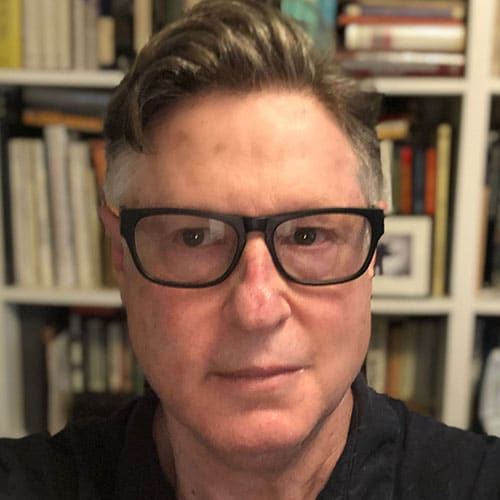
A work by Niso Maman
The Barzilai Medical Center in Ashkelon in Southern Israel, six miles from Gaza, is a 500-bed facility with an emergency room and a teaching hospital that treats Israelis and Palestinians. Qassam rockets launched from Gaza land so regularly on the building that the top two floors are kept unoccupied as a “safety buffer.”
Imagine that you are Lee Wallach, an American and CEO of Community Assets Consulting, a firm specializing in assisting Israeli, international and U.S. environmental technology companies with business in the United States and California. And that you visited Barzilai, some 18 months ago. Or Los Angeles County Sheriff Lee Baca, who, together with his chief of staff, Matt Wollman, also visited Barzilai and, while there, came under rocket attack. Or Niso Maman, an Israeli sculptor of international renown who often works with recycled materials and operates a studio in West Palm Beach, Fla. Or even Daphna Ziman, political activist, philanthropist, founder and chair of Children Uniting Nations, who lives in a beautiful home in Beverly Hills and had heard about Barzilai and the sculptures Maman has created.
Each of these people wanted to do something to help Barzilai.
Here’s what happened: Wallach came up with the idea of having an artist create artworks from the missile fragments and debris that had hit the hospital, and he approached Maman, who accepted the challenge. Wallach also approached Baca to discuss how Qassam rocket debris might be allowed into the United States to be fashioned into sculpture and then exhibited. And Ziman offered her home to host a reception for Barzilai, Maman and the sculptures.
All of which is how, on a recent evening, I came to find myself at Ziman’s home viewing an exhibition of Maman’s sculptures called “The Qassams of Barzilai,” in the company of Maman, Ziman, Wollman and City Councilman Paul Koretz, as well as Dr. Shimon Scharf, Barzilai’s CEO and medical director.
Displayed throughout the home were more than a half dozen of Maman’s sculptures. They were striking, surprising and challenging. In some instances, the work was humbled by its medium’s provenance, at other times it transcended it, becoming a thing of perplexing beauty.
One piece used twisted, rusted strips to form a peace symbol; in another, small shards became a woman’s torso. Even more interesting were pieces in which the rocket canister was evident but was surrounded by metal to suggest a futurist-style work of strange energy, a flower of evil, if you will, moving back and forth between horror and beauty. Finally, there were a few sculptures where the metal seemed like mad brushstrokes speaking their own abstract language.
Maman explained that each metal fragment came from shrapnel collected by the Israeli bomb squad, and each had been marked as to when and where it fell, then stored in evidence boxes. “This was the most challenging scrap metal I ever worked with,” Maman said. “As an artist, I like challenges. With some pieces I tried to transform them completely,” he continued, “but some pieces, it was a struggle to work with the energy of the piece.” Maman said his connection to the materials was personal, as he had been in Ashkelon during a rocket attack, and one of the fragments he’d worked with had fallen the day he was there. He said he derived great satisfaction from the work and from the exhibition. “It’s a great feeling to do this for the hospital, because they are doing wonderful work,” he said.
Wallach said he hopes to send Maman’s current exhibit on a national tour and has already garnered support from the American Jewish Committee, StandWithUs and the Iranian American Jewish Group 30 Years After; the latter organization displayed the work during its recent conference at the Century Plaza Hotel. Wallach hopes to invite other artists to “tell the story of Barzilai.”
Wallach also has launched a fundraising campaign for the Friends of Barzilai to fund an underground emergency room, protected from attacks; to enhance the hospital’s oncology institute; and to renovate the gynecology wing, as well as the neonatal intensive care and pediatric intensive care units. Wallach would like to match the $44 million the Israeli government has pledged for improvements to the hospital.
At the event in her home, Ziman said she had long been frustrated by the situation in Southern Israel and wanted to speak out about the destruction wreaked by the missiles. However, when she first saw the sculptures, she said, “I was blown away.” What moved her was that, in “turning death and ugliness into beauty,” she saw a powerful metaphor for the best of Israel, that it has been “turning a desert into a garden … building rather than destroying … turning a negative into a positive.” She said she was grateful to be able to offer her home for the exhibition.
The event was neither political nor an evening to engender political debate. It was an exhibit of sculptures – interesting, unexpectedly beautiful and poetic. And yet, as Scharf, Barzilai’s director, pointed out, no one can look at the sculptures without thinking of the words of Isaiah: “They shall beat their swords into plowshares.”
Or, as Maman said, “If shrapnel can be turned into fine art, maybe there’s a chance for peace.”























 More news and opinions than at a Shabbat dinner, right in your inbox.
More news and opinions than at a Shabbat dinner, right in your inbox.